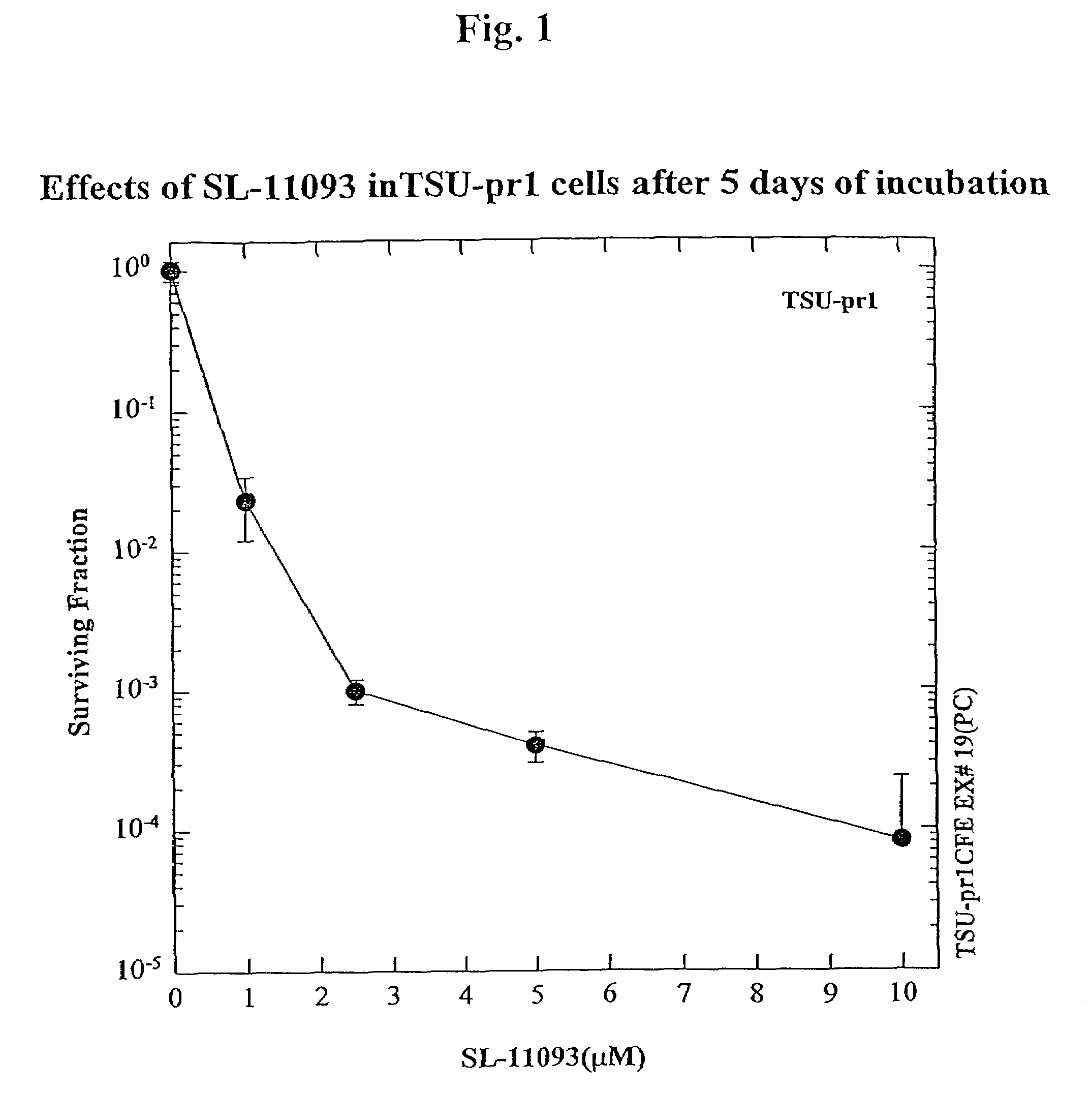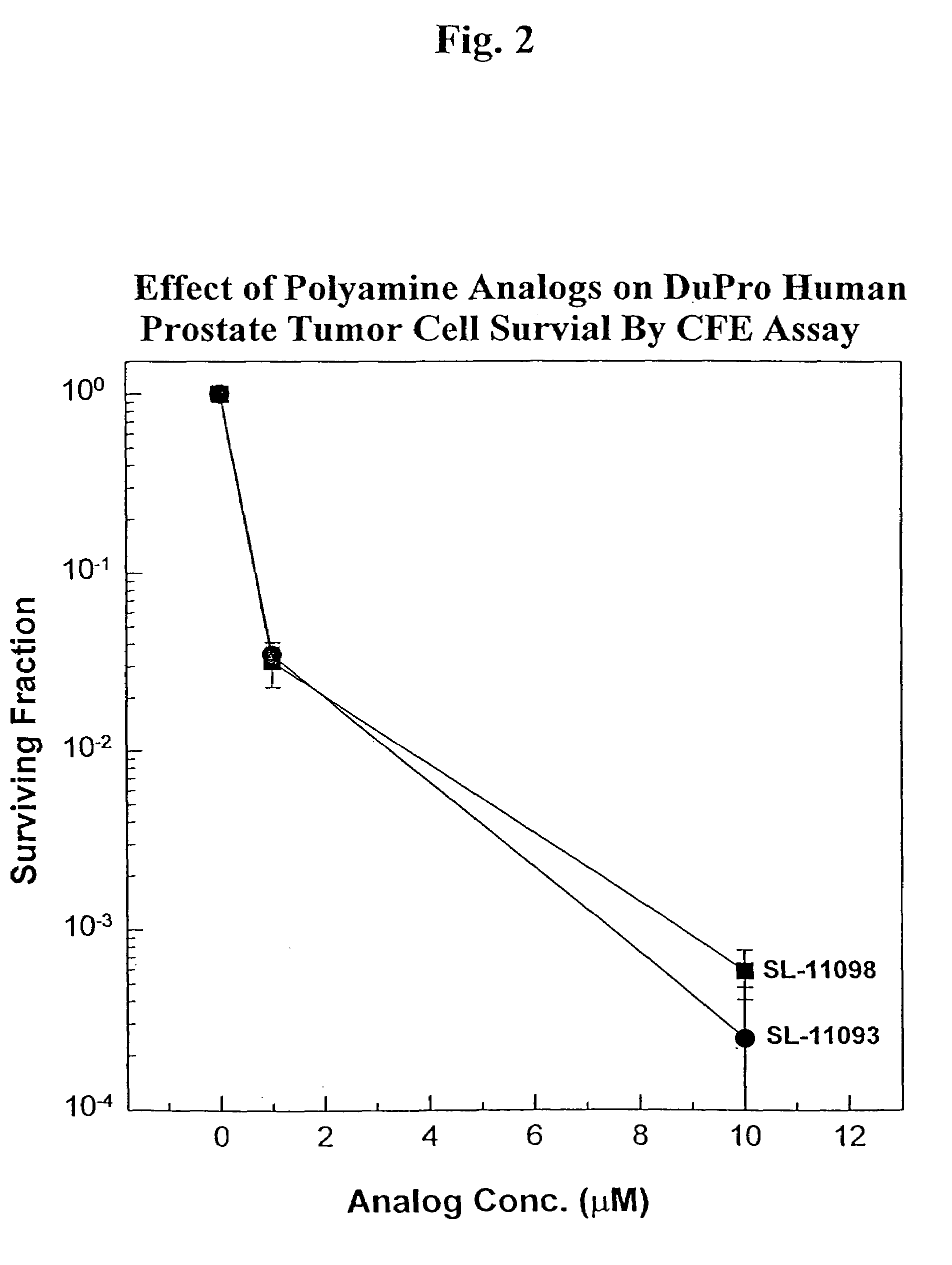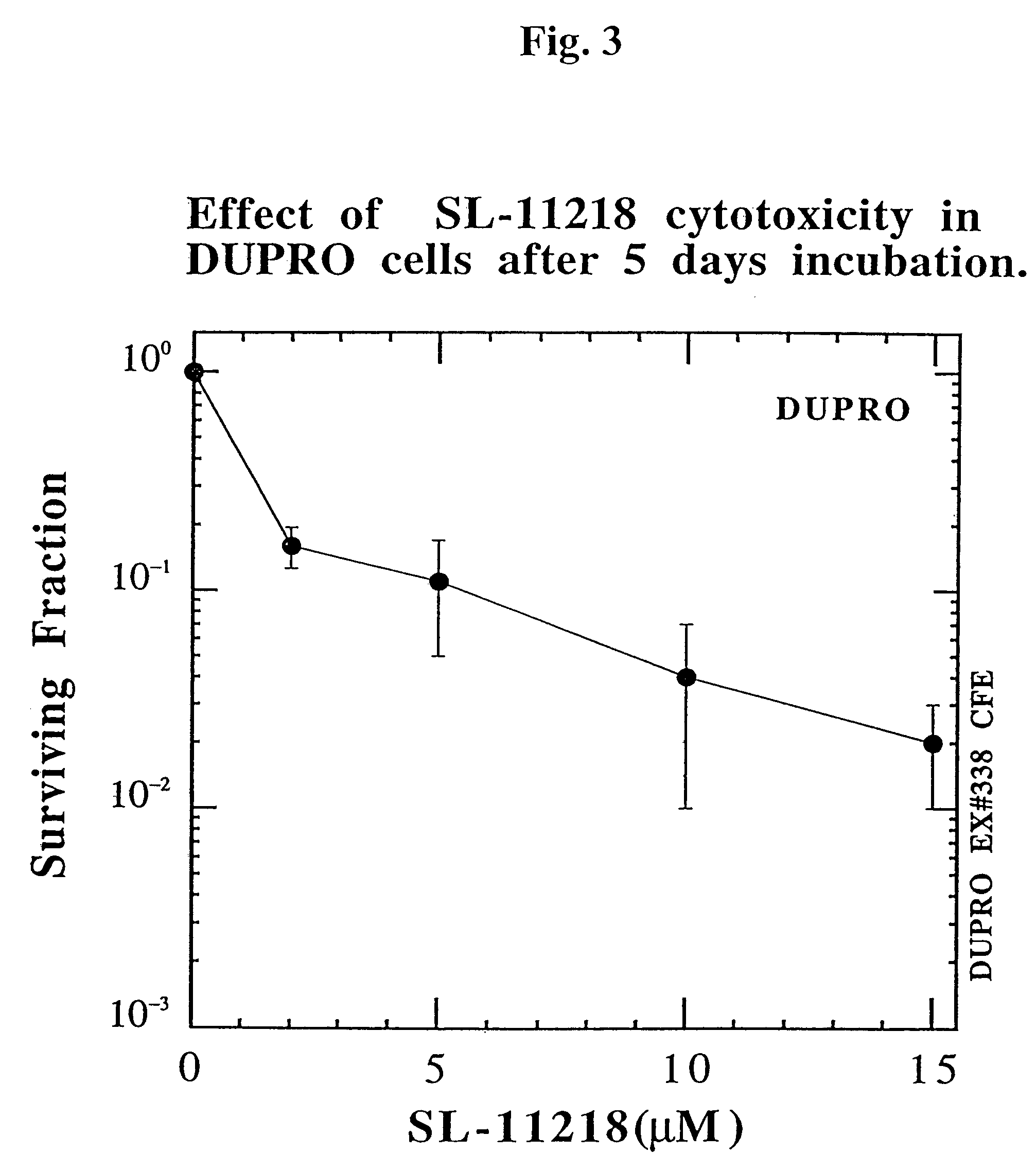Cycloalkyl substituted polyamines for cancer therapy and methods of synthesis therefor
a cancer therapy and cycloalkyl technology, applied in the field of cyclopropylcontaining polyamine analog compounds, can solve the problems of high 5-year survival rate, high survival rate, and much lower survival rate when detected after metastasis
- Summary
- Abstract
- Description
- Claims
- Application Information
AI Technical Summary
Benefits of technology
Problems solved by technology
Method used
Image
Examples
example 1
Synthesis of SL-11093
[0091]
[0092](Ethoxycarbonylmethyl)dimethylsulfonium bromide 1
[0093]A stirred solution of ethyl bromoacetate (98%, 287 g, 1.68 mol) and methyl sulfide (99%, 156 mL, 1.25 eq.) in acetone (500 mL) was kept at 15° C. A white precipitate started to appear immediately and became thicker upon stirring. After stirring for 18 h at 22° C., the solid was filtered, washed with acetone (3×100 mL), and dried under vacuum to afford 1 (477 g, 83.4%) as white crystals. 1H NMR (250 MHz, CDCl3) δ 5.20 (s, 2H); 4.29 (q, J=7.2, 2H); 3.46 (s, 6H); 1.32 (t, J=7.2, 3H). 13C NMR (62.5 MHz, CDCl3) δ 164.36; 63.38; 44.38; 25.22; 13.92.
[0094](Ethoxycarbonylmethyl)dimethylsulfonium ylid 2
[0095]A mixture of 50% aqueous NaOH (183 g) and saturated K2CO3 (1970 g) was added to a stirred solution of 1 (476 g, 2.08 mol) in CHCl3 over a period of 15 min at 10° C. After stirring for an additional 1 h, the top organic layer was decanted, dried over K2CO3 for 30 min, filtered, and concentrated to give...
example 2
Synthesis of SL-11231
[0106]
[0107]trans-1,2-Bis(bromomethyl)cyclopropane 9
[0108]trans-1,2-Bis(hydroxymethyl)cyclopropane 19 (2.6 g, 25 mmol, prepared as described in Reddy et al (1998) J. Med. Chem. 41, 4723) was dissolved in 60 ml of dry CH2Cl2 under argon, P(Ph)3 (13 g, 50 mmol) was added, and the solution was cooled to 5° C. N-bromosuccinimide (9 g, 50 mmol) was added slowly with stirring, and the mixture was kept at 22° C. for 18 h, when the solution was evaporated to dryness. The residue was extracted with petroleum ether (bp 35–60° C.) (4×25 ml), the pooled extracts were cooled at 5° C., and the precipitated triphenylphosphine oxide was filtered off. The solution was evaporated to dryness and the residue 9 (4.7 g) was directly used in the next step without further purification; 1H-NMR (CDCl3) δ: 0.85 (t, J=6.76 Hz, 2H), 1.33 (t, J=6.30 Hz, 2H), 3.35 (m, 4H); 13C-NMR (CDCl3) δ: 17.27, 24.41, 36.75.
[0109]Bis(mesitylenesulfonyl)-12-bromo-10,11-[(E)-1,2-cyclopropyl]-3,8-diazadodeca...
example 3
Synthesis of SL-11232 and SL-11242
[0115]
[0116]3,8,13,18-Tetrakis(mesitylenesulfonyl)-10,11-[(E)-cyclopropyl]-3,8,13,18-tetraazaoctadecane 14
[0117]1,4-Bis(mesitylenesulfonyl)putrescine 13 (5.6 g, 12.4 mmol) and the bromomethyl derivative 11 from Example 2 (3.9 g, 6.2 mmol) were dissolved in 150 ml of dry DMF, and NaH (60%, 0.92 g) was added in one portion. The mixture was stirred for 18 h at 22° C., it was then quenched with 10 ml of 10% hydrochloric acid, the solution was evaporated to dryness, the residue was dissolved in CHCl3 (100 ml), the latter washed first with water (2×50 ml), then with brine (50 ml); the organic solvent was evaporated to dryness and the residue purified by column chromatography on silica gel using CHCl3 / ethyl acetate (9 / 1) as eluant; 2.3 g (37% yield) of 14 were recovered; mp 63° C.; 1H-NMR (CDCl3) δ: 0.35 (m, 2H), 0.80 (m, 2H), 0.95 (t, J=5.8 Hz, 3H), 1.30–1.49 (m, 8H), 2.30 (s, 12H), 2.56 (s, 18H), 2.59 (s, 6H), 2.70–3.30 (m, 14H), 4.66 (t, J=6.4 Hz, 1H), ...
PUM
 Login to View More
Login to View More Abstract
Description
Claims
Application Information
 Login to View More
Login to View More - R&D
- Intellectual Property
- Life Sciences
- Materials
- Tech Scout
- Unparalleled Data Quality
- Higher Quality Content
- 60% Fewer Hallucinations
Browse by: Latest US Patents, China's latest patents, Technical Efficacy Thesaurus, Application Domain, Technology Topic, Popular Technical Reports.
© 2025 PatSnap. All rights reserved.Legal|Privacy policy|Modern Slavery Act Transparency Statement|Sitemap|About US| Contact US: help@patsnap.com



